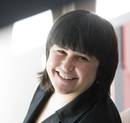Thanks to therapy
This year marks 25 years since the creation of HIV antiretroviral drugs. It is a celebrable event. Against what was then thought, they were a decisive turning point in the evolution of the disease and in the life expectancy of those infected by the virus. Antiretroviral drugs were the first effective treatment, the first step towards immortality.
The words recently written by one of the researchers who made this step possible, Samuel Broder, are revealing. Very little, almost nothing did researchers know about AIDS at the time and remember: “Considering that behind AIDS there was a retrovirus did not solve much: retrovirologists generally believed it was more important to look for an antivirus vaccine than to develop antiretroviral therapies. Antiretroviral therapies were considered useless and patients, doctors and researchers were dissatisfied.”
Few believed then that, twenty-five years later, the protagonists of success and failure would be the opposite. Thanks to antiretrovirals, AIDS has become a chronic disease among those who have therapy. Not only that, it is a disease that from a medical point of view can be carried with a good quality of life. This is the difference between death and life for the patient and therefore a success without excuse. The person with AIDS who we interviewed for this December issue knows this well.
Together with therapy, the effectiveness, low cost and ease of use of preventive measures have been fundamental to make the evolution of AIDS positive in our society.
And thanks to this, the main initial hope, the vaccine, has been a great failure. When the AIDS virus was identified in 1983, it was thought that it would be tested for two years. Since then, however, he escapes again and again to researchers, and no one dares to tell them when it will be. Fortunately, he has no longer died or lived. It will be an important tool to learn about HIV and retroviruses and to combat infection, but in 2010 it is not an obstacle to preventing the spread of AIDS or scientific knowledge or technology.






